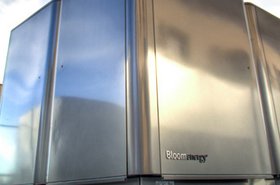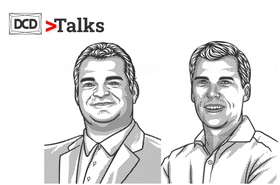“Life doesn’t get easier or more forgiving, we get stronger and more resilient,” Steve Maraboli, Life, the Truth, and Being Free.
After the last couple of years, we can probably all agree that life certainly isn’t getting any easier. But human beings have an unbridled ability to overcome, problem solve, and endure. Our resilience is what keeps us alive.
Earlier this year, UN Secretary General Antonio Guterres issued some stark words of warning, stating that the world is ‘changing before our eyes’ as a result of climate change.
And he’s right. The State of the Global Climate 2021 report showed 2021 to be among the hottest years on record, with flooding, wildfires and other extreme weather events being reported across the globe on a seemingly daily basis.
In the UK right now, residents across the country are still dealing with the damage left in the wake of Storm Arwen, which was closely followed by Storm Barra. And let’s not forget Storm Christoff, which back in January saw residents across North Wales and North-West England evacuated from their homes due to extreme flooding.
At the time, Liberal Democrat councillor Richard Kilpatrick told the Manchester Evening News the atmosphere was one of “anxiety and disbelief”, an all too common trope in what has been dubbed the ‘new normal.’
In the US, Texans experienced winter storms so extreme that 3.5 million businesses and homes were left without power, leaving vulnerable people to fend for themselves as temperatures dropped to as low as -13°C in some areas. As a result, 210 lives were lost.
Risky business
Today, a day without power is hard to imagine, yet the unprecedented increase in extreme weather threatens the 24/7 power that is integral to our everyday lives. Thinking has now shifted from the cost of power, to the cost of not having power.
During 2020, there were 22 billion-dollar weather and climate events across the United States, breaking the previous annual record of 16 (occuring in 2011, and 2017).
With the risk landscape having increased so dramatically, resilient power has never been more important, and having the right safeguards in place is no longer a ‘nice to have’, but a necessity, particularly for those whose power choices are directly linked to the functioning – and success – of their organizations.
This couldn’t be truer than for those operating data centers, where the mitigation of these problems calls for a highly strategic approach to energy management. Fortunately, we are now in a time where there are multiple options for sourcing and delivering electricity.
Distributed generation is one of them, and has been a game changer for those seeking to gain more control over their electricity supply, completely shifting the energy paradigm.
From a centralized present to a distributed future
Taking the US energy grid as an example. Over the course of the 20th century it was built as a one-way value chain from fuel supply to end-user consumption. This infrastructure created a plethora of vulnerabilities, whereby the failure of a single component could (and still can) cause disruption of service to end users.
Although grid hardening programs are underway in every region, upgrading a system of this magnitude is complex, expensive and takes years to properly implement. So, what do you do when a solution is needed now, if not sooner?
With an aging centralized power grid inherently prone to failure, with increasing pressure from mass digitization, natural disasters and cyber-threats, it is promising that we are beginning to see a shift from our centralized present, to a decentralized future.
One solution rapidly gaining traction across industries is the microgrid. Microgrids empower businesses to meet their own specific electricity needs, while helping utilities address the broader challenge of decarbonizing the grid.
Microgrids are distributed onsite power solutions that can disconnect from the traditional grid to operate autonomously. These localized sources of power can link multiple generation technologies at a single site, enabling facilities to not only mitigate risk, but achieve energy independence and therefore improve resilience.
Microgrids are gaining traction because they essentially mean life can go on should the surrounding electrical grid become unavailable. Whether it be critical loads or an entire community, in the increasingly likely event of grid failure, with a microgrid, you have peace of mind that business can continue as usual.
The resiliency challenge
Looking at the world around us, a world now shaped by the snowballing growth of information and communications technology, one thing is clear: data is the oil of the 21st century. Therefore, we need to ensure the facilities in which it resides remain free from risk.
At the same time, while businesses address their critical resiliency needs, the growing onus placed on a green energy future, coupled with the affects of rising energy costs has made the business of selecting power sources a little tricker.
Most distributed energy sources (DER) are self sufficient, but not one size fits all. Resiliency is just one benefit microgrids provide, but decisions based on resiliency shouldn't be made at the expense of environmental concerns. In the same breath, equally, sustainability decisions shouldn’t ignore the importance of a reliable energy supply.
Historically, the typical power resilience strategy for data centers has always been backup generators, predominantly powered by diesel. Unfortunately, when grid disruptions arise, there have been cases where data center generators haven’t reliably started up as expected, highlighting the operational risk that comes with relying solely on the grid for primary power.
Diesel generators also produce more than 40 toxic air contaminants, including a variety of carcinogenic compounds during operation. What’s more, as they are idle assets, they needlessly consume fuel while testing to ensure they can be available when needed. Even when traditional diesel generators are combined with a UPS system, there is still a need for higher resilience over longer sustained periods.
Technologies such as solar and wind are great for boosting a data center operator’s renewable profile, but due to their intermittent nature and land use, cannot practically solve resiliency challenges. Plus, the majority of solar (60 percent) and wind (100 percent) are utility scale that still rely on a vulnerable, above ground, transmission and distribution system.
Introducing Bloom’s AlwaysON Microgrid platform
Thankfully, help is at hand. Bloom’s AlwaysON Microgrid platform is specifically designed to help mitigate the key resiliency challenges faced by traditional mission critical power infrastructure, while incorporating air and water sustainability.
With the AlwaysON Microgrid platform, the functions of today’s centralized power infrastructure i.e, the transmission, distribution, substations, batteries, and back-up equipment, are all integrated into a single distributed generation platform, avoiding the vulnerabilities of conventional transmission and distribution lines by generating power onsite where the electricity is consumed.
The beauty of microgrids is the fact that they can operate alongside a main grid, but can continue providing power during a utility outage. This independence equals resilient power.
How it works: fuel cell building blocks
Bloom Energy’s systems utilize an innovative solid oxide fuel cell technology with roots in NASA’s Mars program. Fuel cell technology targets a customer’s 24/7 energy usage, unlike technologies such as solar or wind which are inherently intermittent.
The cell itself consists of three parts: an electrolyte, an anode (-), and a cathode (+). The electrolyte is a solid ceramic material and the anode and cathode are made from special inks that coat the electrolyte. Through an electrochemical reaction, Bloom energy servers are able to produce electricity without combustion.
The system starts with a single cell that produces 25W, roughly enough to power a light bulb. The cells are then stacked within the system and assembled into 50 kW power modules – modules that can function independently from each other.
These modules are then combined to create a 200, 250 or 300 kW Bloom Energy Server. This modular, fault-tolerant architecture also means the system is able to operate at a very high availability and allows for any number of energy servers to be clustered together, in various configurations, to form solutions from hundreds of kilowatts to many tens of megawatts.
This highly available always-on primary power source boasts six-nines (99.9999 percent) reliability, eliminating the need to invest in operating and maintaining legacy equipment that tends to fail during transitional events such as loss of utility power.
Comparable to best-in-class UPS systems deployed in data centers and other mission critical facilities, the power quality delivered by Bloom Energy Servers is designed to meet or exceed the power quality standards relevant to distributed power generation and distribution, such as, UL-1741, IEEE-1547, IEEE-519 and other utility grid interconnection requirements in the US and other countries around the world.
What’s more, Bloom Energy’s distributed, modular architecture produces power 24/7 without particulate emissions, ideal for striking that crucial balance between ESG (environmental, social and governance) concerns and power resilience.
This is not a UPS or generator sitting idle waiting for an outage event – this is an active asset delivering clean, highly reliable power around the clock. A win-win when it comes to providing the solutions needed to help customers weather any storm, both now and in the future.
To find out more about Bloom’s solutions, click here.
More from Bloom Energy
-

Teledata installs 1.2MW of Bloom fuel cells in Manchester data center
Distributor Conrad brings the first Bloom fuel cells to the European market
-

When natural gas beats the grid
We ask Equinix why it is using fuel cells as an alternative to the once-reliable US grid

